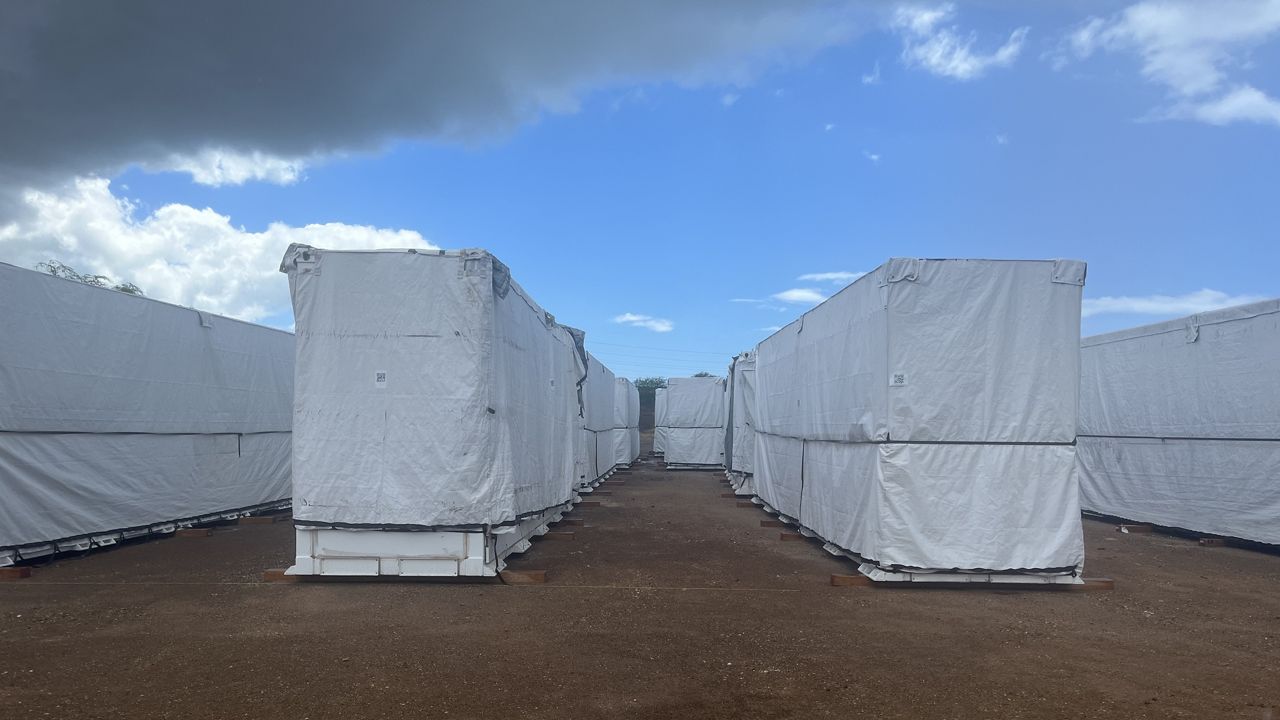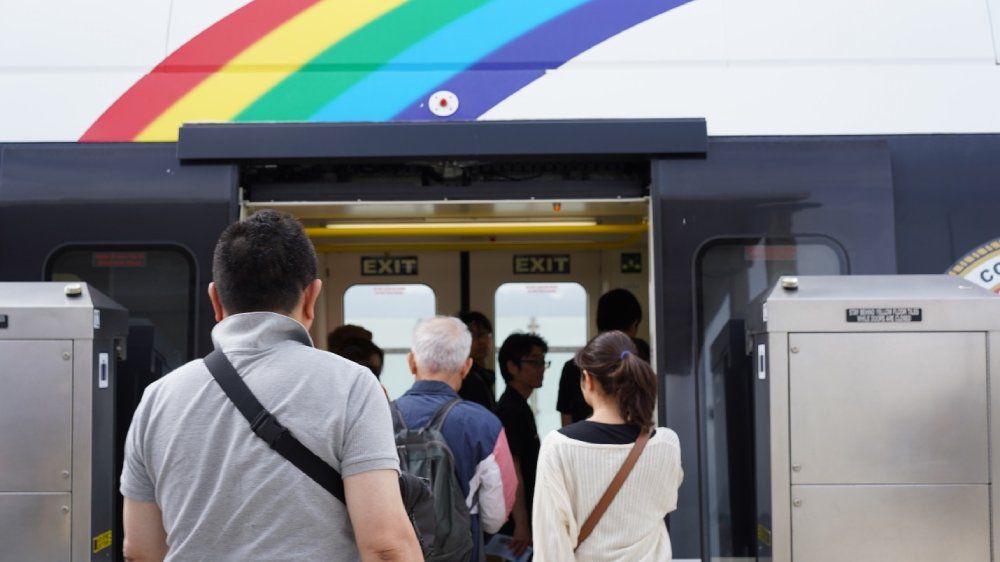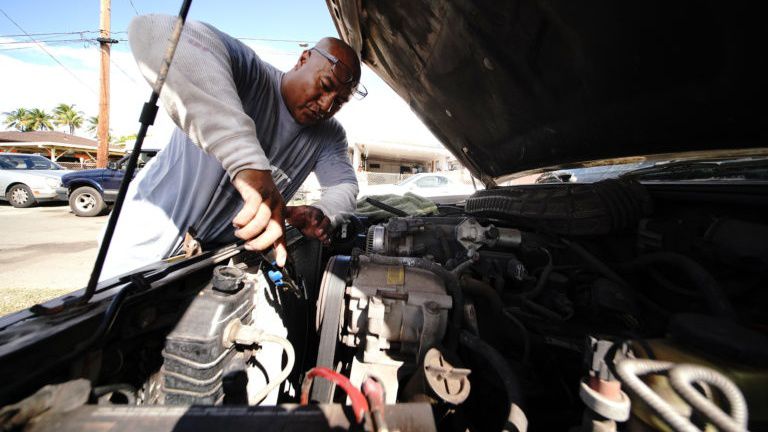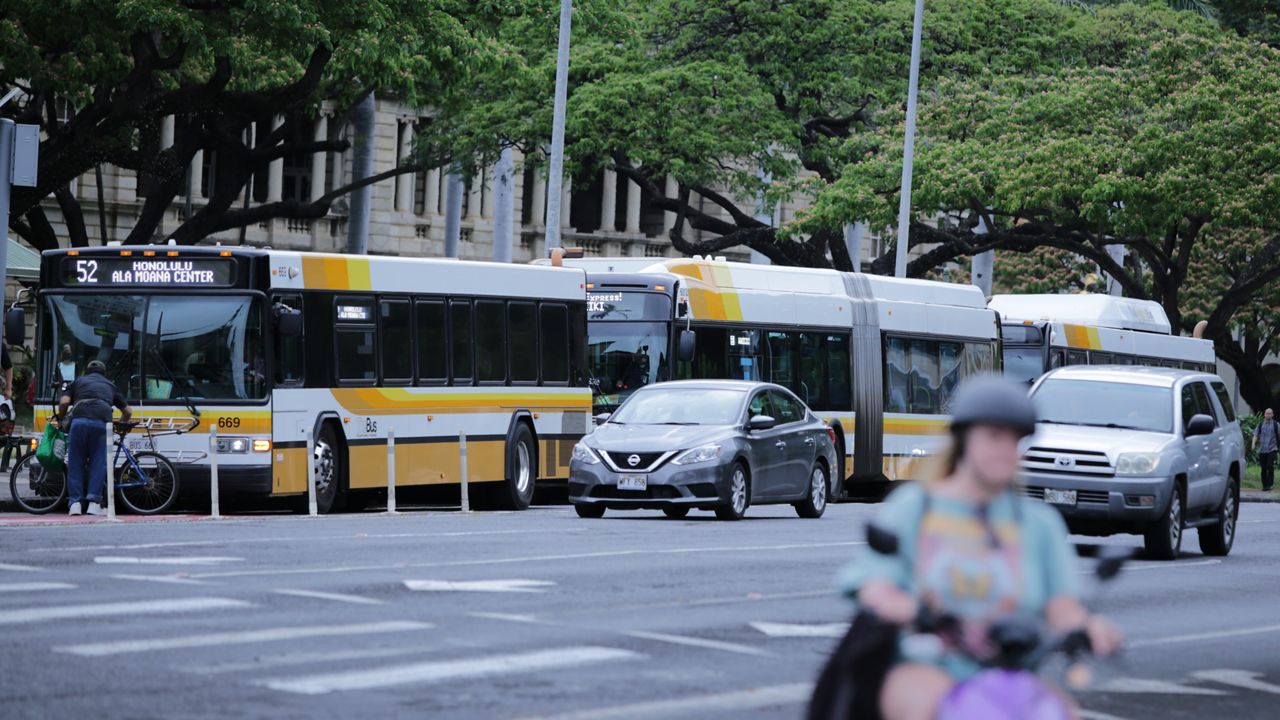With the closing of Oahu’s last coal-burning power plant less than two weeks in the rearview and a series of renewable energy goals on the advancing horizon, the new Kapolei Energy Storage facility in West Oahu is projected to both ease the transition from conventional power generation and serve as the backbone for the power grid of the future.
Those are lofty visions for what at the moment looks like dozens of giant refrigerators lying on their sides in a 7-acre expanse of what, on a rainy September morning, is quickly turning into thick, shoe-sucking mud.
“This is going to be a postcard for the mainland for the future of how to build a modernized electric grid to policy makers on the mainland who are absolutely watching Hawaii’s transition,” said Polly Shaw, head of policy and communications for project owner/developer Plus Power. “Projects such as this that you can actually move from conventional resources to a modernized grid without losing efficiency or performance.”
The 185 megawatt/565 megawatt hour battery storage project broke ground in April and is scheduled to be fully operational by May 2023.
Located in an industrial area in Kapolei, KES is in proximity of a key Hawaiian Electric Co. substation. Once it is online, the facility will provide load shifting and fast-frequency response services to stabilize HECO’s electrical grid and allow it to immediately respond to fluctuations.
As Plus Power director of engineering and construction Chris Quarante explained, the facility’s most important contributions likely will not be noticed by consumers.
“It’s providing stability for the grid so it’s really about reliability,” he said. “If there’s an outage that disrupts the grid or causes your lights to flicker, this is going to provide capability on the transmission side to provide stability for those things happening. It will keep something worse from happening and keep things stable. From a consumer perspective, they should think of it as is kind of like a shock absorber for the grid or a pacemaker for the grid. It provides stability to the electrical system at a transmission level.”
While most traditional power plants operate on a rotation system in which combustion is used to push the rotator shaft of a generator, which then turns the mechanical energy into electricity, KES will run on Tesla Megapack 2XL utility-grade storage batteries, each with 3MW storage capacity.
Shaw said the facility will also help to limit curtailment, the intentional reduction of renewable energy output due to system constraints. In its first five years of operation, KES could stop nearly 70% percent of curtailment and allow HECO to accept 10% more renewable energy onto the grid.
“it just shows that consumers can keep doing their part with customer-centered renewables knowing that there are going to be assets like ours to help keep the system in balance around it,” Shaw said.
Shaw said KES will ultimately accelerate the state’s progress toward its mandated transition to 100% renewable energy generation by 2045.









